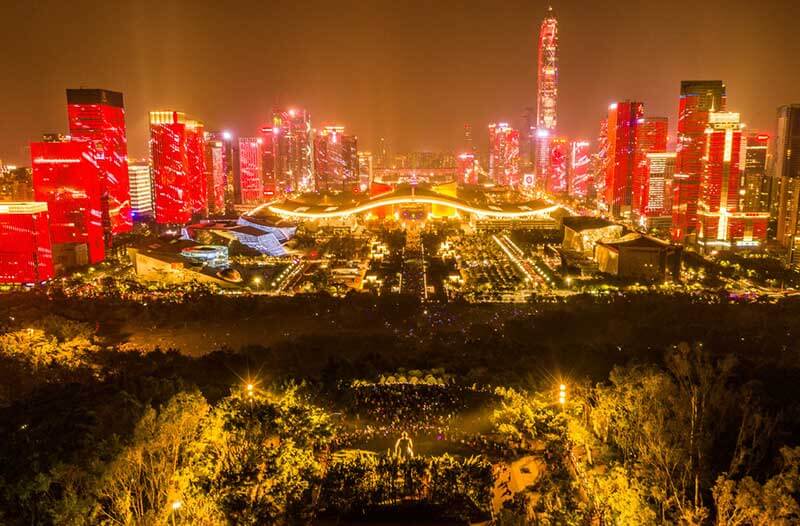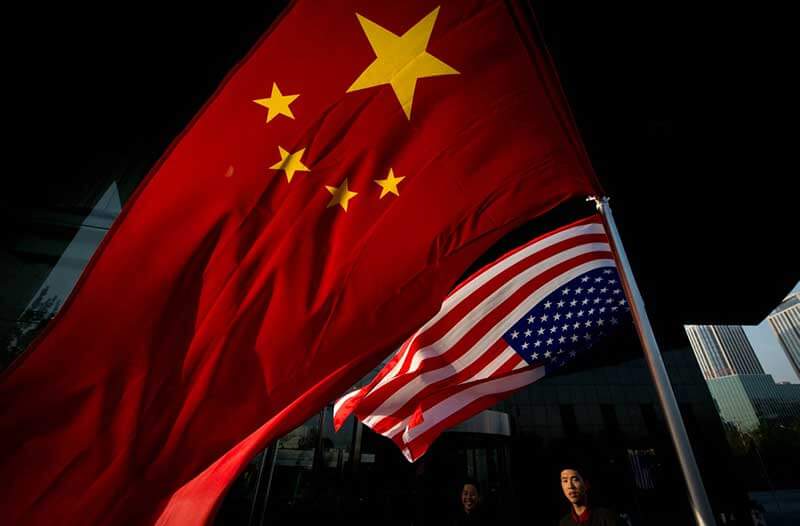- China’s journey toward becoming the second largest economy in the world
- Scenario No. 1: China’s economy will experience a slowdown
- Scenario No. 2: The decline of US influence in China
- Scenario No. 3: A political crisis will shake up the Asian continent
- Scenario No. 4: China’s growth will the basis for a new, bipolar world
- Is China’s grand plan a myth or reality?
The world we live in is divided among powerful countries, with the US holding the throne since World War II. And while the US has been on top for decades, China’s ambitions to become a global leader and dethrone the US come as no surprise.
There are numerous arguments for why China could become the world’s next superpower. This is mostly related to its economic, technological, and military development. Over the past few years, China has showed great interest to strengthen its industry, and the government has made serious investments in technology and startups. But there’s one thing that’s holding China back from completing its ambitious plan. To become number one, China needs global support, and gaining trust in today’s political climate is difficult. But if China somehow manages to overcome this challenge and becomes the world leader, how will things change?
China’s journey toward becoming the second largest economy in the world
With more than 1.3 billion people, China is the most populous country on Earth. As President Xi says, this “great nation” faced “hardships and adversity”, but remained invincible nevertheless. Over the past four decades, China’s economy has experienced significant growth, and it doesn’t seem to be slowing down. In the 1970s, when China started implementing economic reforms, its GDP was valued at $214 billion, making it the 9th largest economy in the world. Fast-forward 30 years to 2013, and China became the second largest economy in the world with a GDP worth $9.2 trillion. Its GDP continued to grow in the following years, reaching $23.12 trillion in 2017, which is 6.8 per cent higher than the year before. Moreover, China’s poverty rate decreased, with only 3.3 per cent of the population now living below the national poverty line.
By focusing on technology and implementing strategic innovation, China is positioning itself to become the next global superpower – and many are concerned what a future led by China could look like. The Russian International Affairs Council (RIAC), for instance, developed four hypothetical scenarios of how China could develop in the near future, and it’s made some plausible predictions.
Scenario No. 1: China’s economy will witness a slowdown
As RIAC predicts, in the next few years, the US will continue to accelerate economically, while China’s economic growth will be slowing down. However, the good news for China will be that military tensions in the region will be reduced. This is mainly because Pyongyang will stop its “nuclear and ballistic programs”. On the other hand, the US will reach certain agreements with China regarding nuclear arms. Although issues regarding territorial disputes in the South China Sea will remain unresolved, this won’t create a lot of tension in the region. RIAC also predicts that Asian states, including China, will be more economically dependent on one another in the coming years. As China, Japan, South Korea, and other countries in the region will most likely increase trade with one another, they could make the US obsolete, or at least reduce its influence in Asia. And when one fails, another one shines, which leads us to RIAC’s next scenario.

Scenario No. 2: The decline of US influence in China
In this scenario, China’s economy will continue to grow. The country will experience political and technological growth, too. This will become more evident after the US financial crisis in 2020, which will occur from US trade disputes with Europe, Canada, and Mexico. All this will lead to slower growth of the US economy, but will give China an advantage, RIAC predicts. Events happening in the US will encourage China to become more open toward its neighbouring countries. Its free trade zone will no longer be based only on its initial geographic boundaries. Instead, it will expand onto the rest of the continent. Furthermore, territorial conflicts and issues will become less critical. When it comes to its relations with India and their border issues, China will accept some concessions and recognise “India’s strategic leadership in South Asian trade and economic relations”. Since the relationship between China and India will have improved, India will no longer rely on the US as its security enabler. As US influence in China and India will start to fade away, the US will be forced to look for new allies, such as Japan and Australia.

Scenario No. 3: A political crisis will shake up the Asian continent
The third scenario envisions the rise of political radicalism and nationalism among Asian countries, which will become particularly evident in China. This is the time when numerous political crises and terrorist attacks will occur. As a result, China’s economy is going to suffer the most. Due to these issues, the implementation of infrastructure projects around the country will slow down. This will force China to look for support in the US, who’ll play the role of “an offshore balancer” and protect China from its potential rivals such as South Korea, Japan, and India. In return, China will probably need to abide by rules imposed by the US, so the idea of becoming a global leader will remain unreachable.
Scenario No. 4: China’s growth will lay the basis for a new, bipolar world
In the last, and probably the best scenario for both countries, RIAC predicts that China and the US will both be experiencing growth. China’s rise will emerge amidst military, economic, and political instability in other Asian countries. The US will continue to have an influence in the region, and all of this will force the Asian continent to make a choice between Beijing and Washington. Such a bipolar world will make Russia’s dependency on China a lot stronger than it was in the past. “The new bipolarity of the 21st century” will be similar to the American-Soviet bipolar world from the 20th century. However, the new bipolarity, as RIAC predicts, will be less dangerous than the previous one. To succeed, countries involved in the transition will need to separate economic collaboration from their political attitudes and confrontations.
By taking a measured approach, RIAC has offered scenarios that don’t require extreme events, but rather gradual economic growth that could affect relations between China and the US, as well as China and the rest of Asia – shifting the global balance of power. However, for China to become a global superpower, it’s going to need more than simple economic growth.
Is China’s grand plan a myth or reality?
Although the US has been the world’s superpower ever since World War II, there’s a chance that it could soon be removed from its throne – and China is a serious candidate. But does this country have what it takes to become a superpower? Over the past decades, China has made remarkable progress in economy, military, and technology. From an average country, China transformed itself and became the second largest economy in the world. But to earn the title of the world’s superpower, China still has a long way to go. And even if things don’t go according to plan, China will continue to play a key role in the global economy and politics.
Share via:


